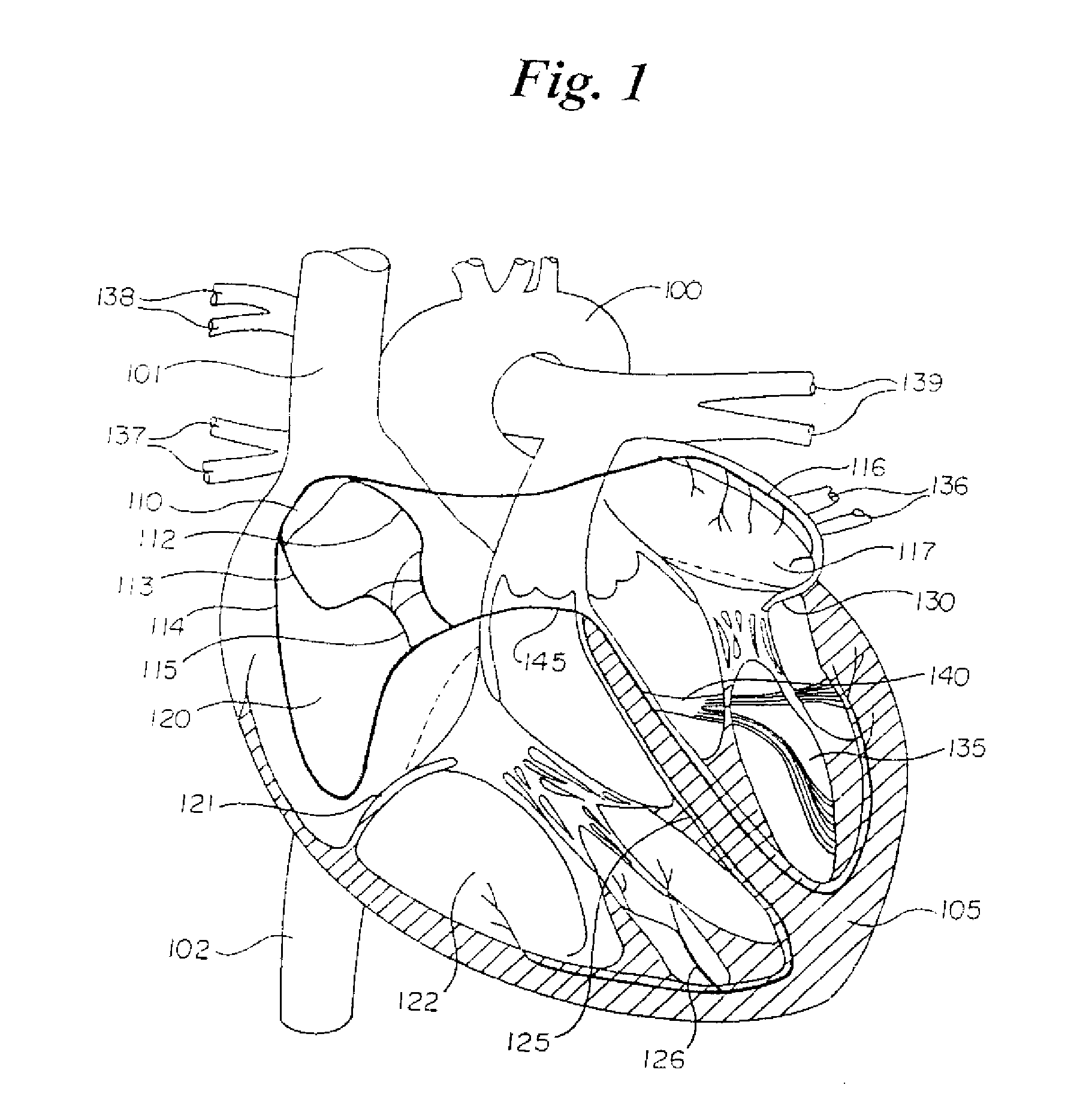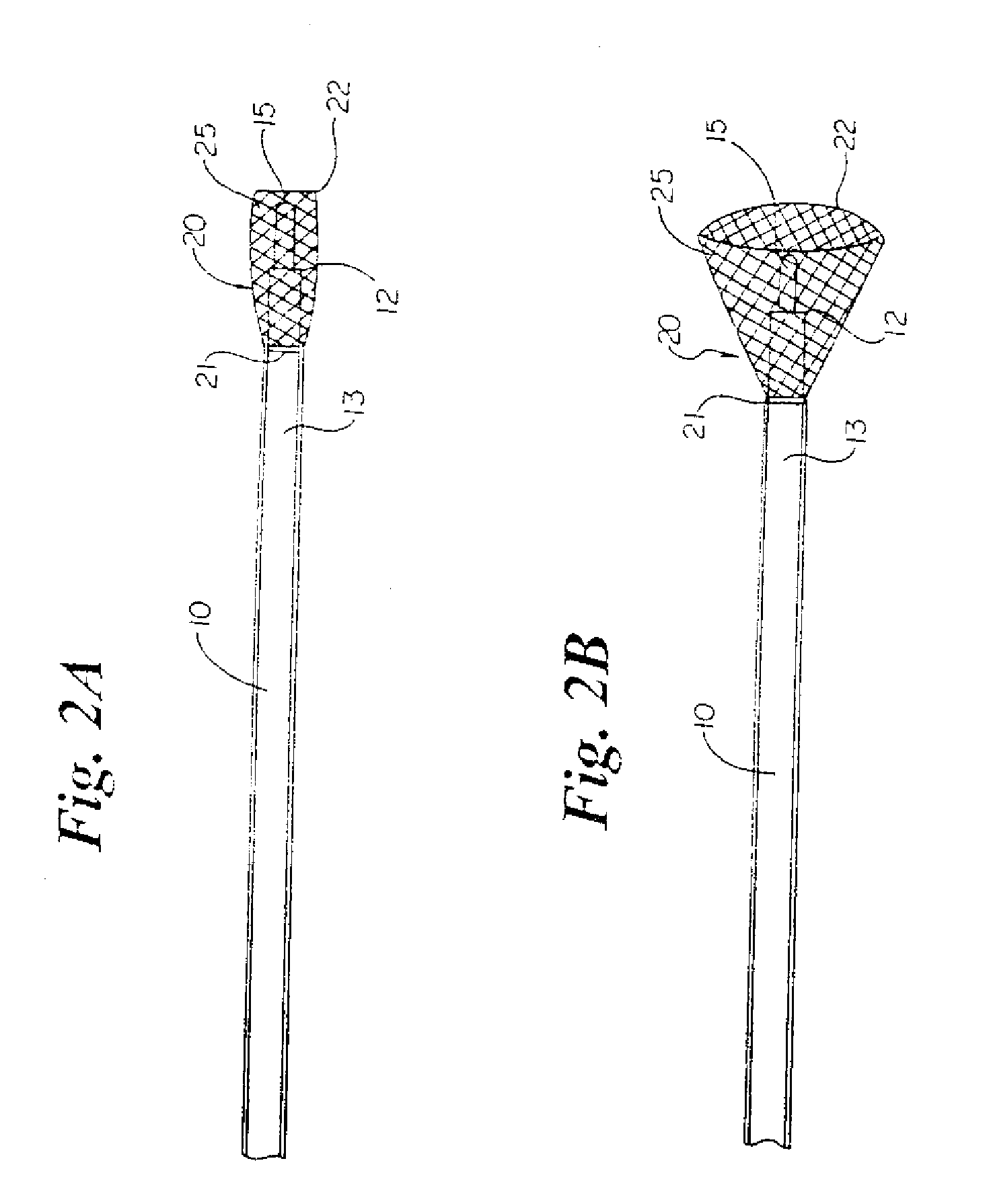Percutaneous catheter and guidewire for filtering during ablation of myocardial or vascular tissue
a technology catheter, which is applied in the field of percutaneous catheter and guidewire for filtering during ablation of myocardial or vascular tissue, can solve the problems of reducing the efficiency of the atrioventricular synchrony, affecting the atrioventricular synchrony, and reducing the embolization to other organs, so as to minimize the embolization
- Summary
- Abstract
- Description
- Claims
- Application Information
AI Technical Summary
Benefits of technology
Problems solved by technology
Method used
Image
Examples
Embodiment Construction
[0033] Normal cardiac conduction originates in sinoatrial (SA) node 110, located in the upper wall of right atrium 120 as depicted in FIG. 1. The SA node, the heart's main pacemaker, generates electrical activity which travels through a conduction pathway. Electrical impulses travel from SA node 110 over Bachmann's bundle 116 to left atrium 117, along anterior internodal tract 112, middle internodal tract 113, and posterior internodal tract 114 in right atrium 120 to atrioventricular (AV) node 115. At the AV node the impulse is delayed for approximately 40 milliseconds, allowing atrial contraction, and resumes down through bundle of His 145. The electrical impulse travels rapidly into right bundle branch 125 and left bundle branch 140 and continues down the interventricular septum. From the bundle branches, the impulse continues through Purkinje fibers, which rapidly conduct the impulse to both ventricular endocardium. In this way, the electrical impulse generated from the SA node a...
PUM
 Login to View More
Login to View More Abstract
Description
Claims
Application Information
 Login to View More
Login to View More - R&D
- Intellectual Property
- Life Sciences
- Materials
- Tech Scout
- Unparalleled Data Quality
- Higher Quality Content
- 60% Fewer Hallucinations
Browse by: Latest US Patents, China's latest patents, Technical Efficacy Thesaurus, Application Domain, Technology Topic, Popular Technical Reports.
© 2025 PatSnap. All rights reserved.Legal|Privacy policy|Modern Slavery Act Transparency Statement|Sitemap|About US| Contact US: help@patsnap.com



